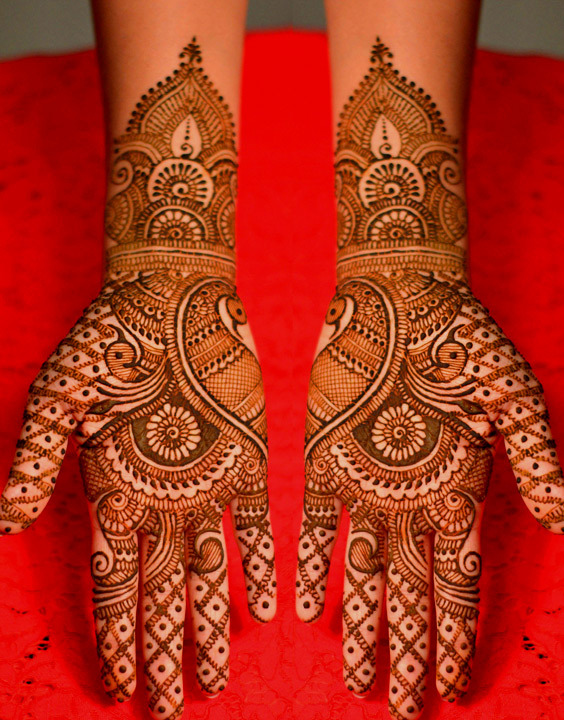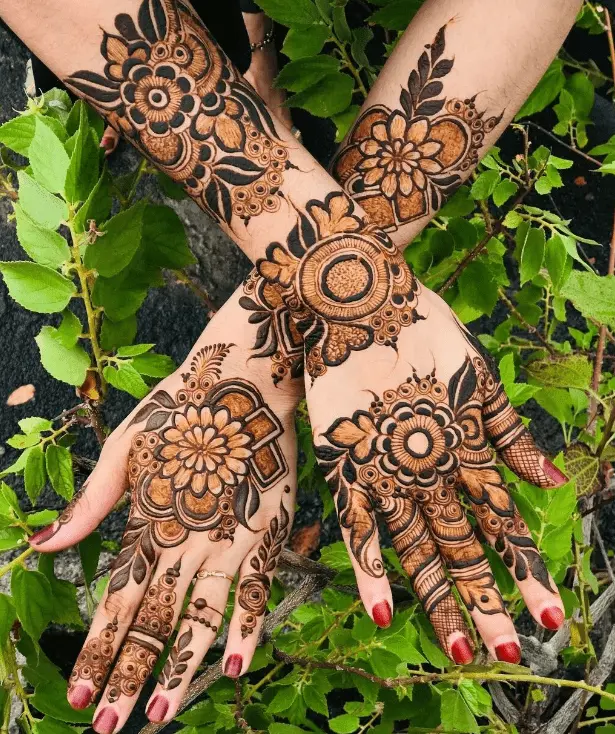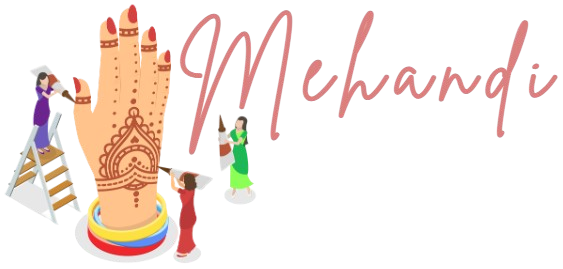Introductions
Particularly in India, Pakistan, and the Middle East, dulhan mehandi—also called henna—is a staple of many cultures’ wedding customs. Intricate mehndi designs on their hands and feet let brides symbolize love, wealth, and happiness. This page looks at basic, straightforward dulhan mehndi designs, their importance, and how to apply them methodically.
Mehandi designs simple and easy?

Made from dried, ground henna plant (Lawsonia inermis) leaves, dulhan mehandi forms a paste when blended with water, lemon juice, or essential oils. The skin is subsequently covered with this mixture, which, when dried leaves a reddish-brown stain. Often used for both decoration and medicine, natural mehandi designs simple and easy is healthy for skin.
Mehndi’s importance for Weddings

Mehndi has great cultural value rather than only aesthetic appeal.
1. Symbol of Love: Darker mehandi designs simple and easy stains are thought to show the bride and groom deeper affection.
2. Prosperity & Good Luck: dulhan mehandi is supposed to bring the couple blessings and good fortune.
3. Medicinal Benefits: Its antibacterial and cooling qualities serve to reduce tension and ward against illnesses.
4. Tradition & Rituals: Mehndi rituals, full of song, dance, and celebration, are a vital component of pre-wedding events.
Advice for Dark Mehndi Stains That Last
Apply fresh, superior henna.
For at least 24 hours following application, avoid water contact.
Warm hands will help to hasten the staining process.
Let the mehndi paste remain as long as it can before being taken off.
To intensify the stain, dab mustard oil mixed with cloves.
Easy & Simple Dulhun Mehndi Designs
1. can find floral patterns in:
Floral arrangements have classic elegance. Brides who want a simple yet classic style could choose delicate flowers, leaves, or vine designs.
2. Mandala Designs

Designed with a circular pattern in the middle of the palm, a mandala mehndi design stands for eternity and harmony. It’s basic but really beautiful.
3. Arabic Mehndi Style

Arabic mehandi designs simple and easy uses strong, free-flowing patterns with intervals in between. For brides seeking a sleek and contemporary design, this is a quick and simple choice.
4. Peacock Construction
Peacock ideas stand for elegance and beauty. Usually featuring finely sculpted feathers, these designs are ideal for brides seeking a creative flair.
5. Mehndi minimalistic
Brides who want a subdued style could choose minimalist dulhan mehandi, which uses basic lines on the hands and fingers, dots, and small flowers.
6. Customary Rajasthani Mehndi

This style has complex designs including brides, grooms, elephants, and cultural icons. Though it seems really attractive, it calls for accuracy.
Detailed Guide on Applying Mehndi
1. Mehndi Paste preparation

Combine natural henna powder with water, lemon juice, and several drops of essential oil.
For better color release, let the paste sit for minimum six to eight hours.
2. Getting ready the skin
To get dirt and oils from your hands and feet, wash them.
Steer clear of lotion since it lessens the stain’s intensity.
3. using the design:
Apply dulhan mehandi with a cone or brush.
Move towards the wrist starting with the fingertips.
Let the mehndi dry for minimum four to six hours.
4. Darker Stain Aftercare
For the first twenty-four hours avoid water.
To improve the color, dab mustard oil or lemon-sugar mixture.
Rather of cleaning it, scrape off dried mehandi designs simple and easy.
Ad advantages of henning (Mehndi).
Not simply for decoration, henning offers many advantages as well:
1. Natural Cooling Agent: Ideal for hot climates, henning has a cooling impact on the body.
2. Skin & Hair Care: Skin and hair care helps the skin and strengthens hair, so reducing dandruff and hair fall.
3. Antiseptic Properties: Helps stop infections and improves healing of wounds.
4. Relieves Stress: Henna’s scent is said to be quite relaxing for the mind.
5. Enhances Nail Health: Antiseptic Properties: Applying henna to nails reinforces them and helps to stop damage.
Dulhan Mehndi’s Background and Significance
For millennia, Mehndi has been a mainstay of wedding customs. The mehndi stain’s darker the color, the greater the tie between the bride and groom is thought to be. Mehndi is connected in many societies with good energy, love, and fortunate starts. Celebrated with music, dance, and fun, bridal mehndi festivities are among the most treasured pre-wedding customs.
Why green is the River Mahanadi?

For several reasons the Mahanadi River seems green.
1. Algal Growth: The water may seem green because of algae present in it.
2. Mineral Content: The minerals of the riverbed can help to explain its greenish color.
3. Water Pollution: The hue of the water could change depending on agricultural and industrial runoff.
4. Reflection of Surroundings: The river could seem green because of the way trees and other plants reflect.
Conclusion
Bridal beauty and custom depend critically on mehandi designs simple and easy. Whether your preferred design is a basic flower pattern or a complex Rajasthani one, the secret is to enjoy the process and value the cultural relevance. Easy achievement of stunning dulhan mehndi designs is possible by following the detailed instructions. Moreover, knowing the natural elements influencing the Mahanadi River helps us to become more conscious of environmental problems. Moreover, henna offers various health advantages, which makes it a useful natural cure outside its aesthetic application.

